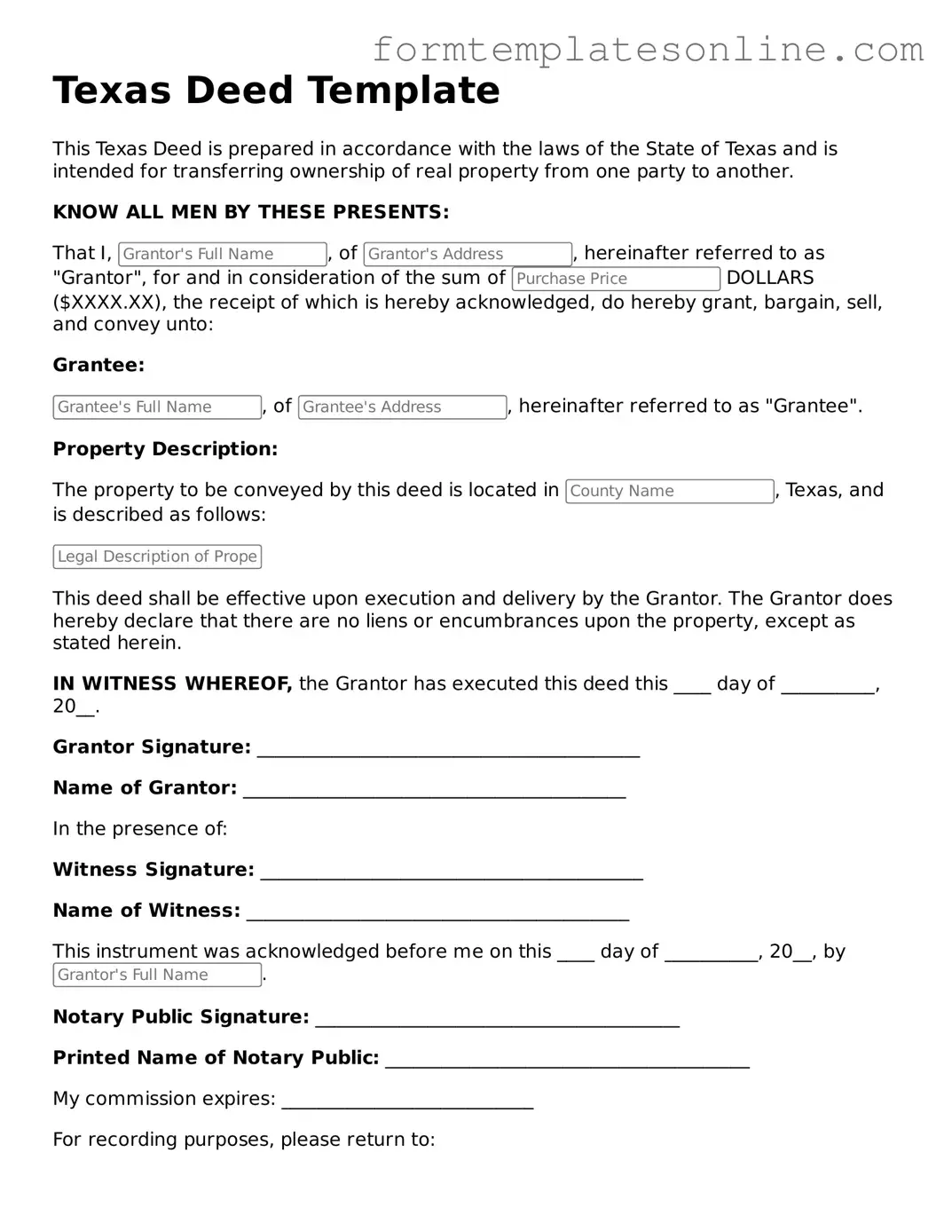What is a Texas Deed form?
A Texas Deed form is a legal document used to transfer ownership of real property in Texas. This form outlines the details of the transaction, including the names of the buyer and seller, a description of the property, and any conditions of the sale. It serves as proof of ownership and is essential for recording the transaction with the county clerk's office.
What types of deeds are available in Texas?
In Texas, several types of deeds can be used, including General Warranty Deeds, Special Warranty Deeds, and Quitclaim Deeds. A General Warranty Deed provides the most protection to the buyer, as it guarantees that the seller holds clear title to the property. A Special Warranty Deed offers limited guarantees, while a Quitclaim Deed transfers whatever interest the seller has without any warranties.
Do I need an attorney to prepare a Texas Deed?
While it is not legally required to have an attorney prepare a Texas Deed, it is highly recommended. An attorney can ensure that the deed complies with state laws, accurately reflects the terms of the sale, and protects your interests. If you choose to prepare the deed yourself, be sure to follow all legal requirements carefully.
How do I fill out a Texas Deed form?
Filling out a Texas Deed form involves providing specific information, such as the names of the grantor (seller) and grantee (buyer), a legal description of the property, and the consideration (purchase price). It's crucial to ensure that all information is accurate and complete to avoid any issues during the transfer process.
Where do I file a Texas Deed?
After completing the Texas Deed form, it must be filed with the county clerk's office in the county where the property is located. Filing the deed officially records the transfer of ownership and makes it a matter of public record. Be sure to check for any local filing fees that may apply.
Is there a specific format for a Texas Deed?
Yes, Texas Deeds must follow a specific format to be valid. They should include the names of the parties involved, a legal description of the property, the date of the transaction, and the signatures of the grantor and any witnesses, if required. Ensuring that the deed meets these requirements is essential for its enforceability.
What happens if I don’t record my Texas Deed?
If you do not record your Texas Deed, you may face challenges in proving your ownership of the property. Additionally, if someone else records a deed for the same property after you, they may be recognized as the legal owner. Recording your deed protects your rights and interests in the property.
Can a Texas Deed be revoked or changed?
Once a Texas Deed is executed and recorded, it generally cannot be revoked or changed without the consent of all parties involved. If changes are necessary, a new deed must be created and recorded. This process ensures that any modifications are legally recognized.
Are there any tax implications when transferring property with a Texas Deed?
Yes, transferring property can have tax implications. In Texas, property transfers may be subject to transfer taxes or capital gains taxes, depending on the circumstances. It is advisable to consult with a tax professional to understand the potential tax consequences of your property transfer.
What should I do if I lose my Texas Deed?
If you lose your Texas Deed, you can obtain a copy by contacting the county clerk's office where the deed was originally filed. They can provide you with a certified copy of the deed, which can serve as a replacement. Keeping a safe copy of important documents is always a good practice.
